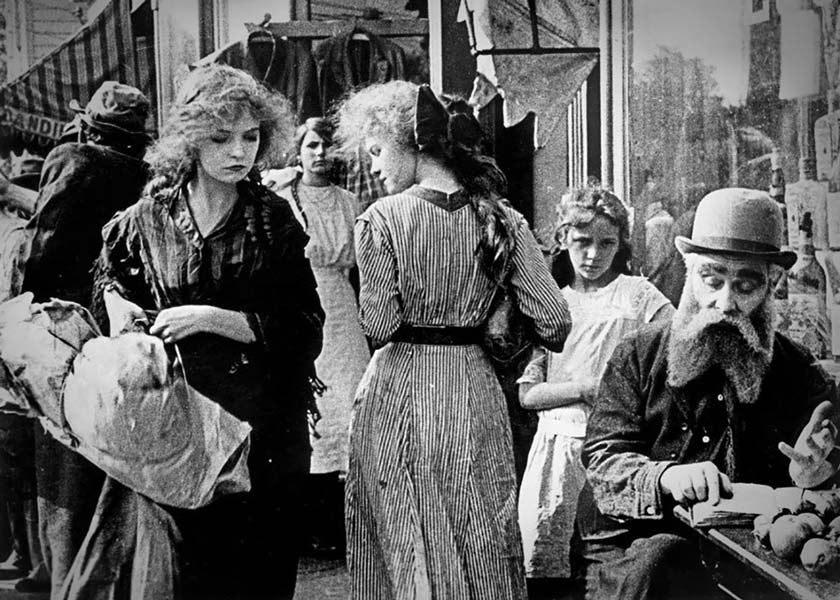Synopsis
The Little Lady (Gish) and her boyfriend, the Musician (Miller), live in a New York tenement. When the Musician goes away to earn money, the Little Lady remains with her sick mother (Bracy), who soon dies. The Snapper Kid (Booth), a local hoodlum, makes advances to the Little Lady who slaps him. He admires her spunk. When the Musician returns with the money, the Snapper Kid robs him.
A girlfriend talks The Little Lady into attending the Gangster's Ball. One of the gangsters tries to drug her, but the Snapper Kid stops him. His interference leads to a confrontation between their gangs. The shootout kills many of the gangsters, but the Snapper Kid gets away just as the police arrive. The fleeing Kid bumps into the Musician who retrieves his stolen wallet. The Kid tries to hide in the apartment of The Little Lady, but the police find him. He tells her that he saved her from being drugged, and to repay him, she and the Musician tell the police that he was with them. As he goes out, the Kid tries to take The Little Lady with him, but she prefers the Musician. The Kid is perplexed by this choice, but leaves them to their happiness.
Discussion
From 1908 to 1914, D. W. Griffith directed at least seventy short films per year. The films vary greatly in setting and story, and provided ample opportunity for Griffith to experiment with creative and groundbreaking techniques in film form. The films are notable for their strong storylines, good acting, and careful set design. Audience interest and suspense are maintained through careful editing, blocking, timing, and cinematography.
The Musketeers of Pig Alley is an excellent example of effective story telling within a brief running time. The story is set among the tenements of New York City's Lower East Side. The crowded streets are filled with a diverse population. The viewer quickly understands how this milieu produces and controls the thoughts and actions of the characters. The Snapper Kid, an especially strong personality, blends into this environment.
Most of the film is shot with the straightforward medium and wide shots common of the era, with little or no camera movement or in-scene editing. However, Griffith and his pioneering cinematographer G.W. 'Billy' Bitzer employ depth of field and 'focus pulling' to highlight the Snapper Kid's gang as they move through back alleys before the shootout with their rivals. As the gang movies in single file along a wall, the Snapper Kid, leading, glides by into a striking close up as the background loses focus (Bitzer is manually adjusting the focus length of the camera lens) and slides around the wall as the next gangster — played by Harry Carey — follows and comes into focus.
Further Reading

